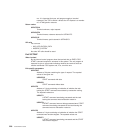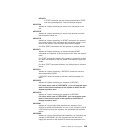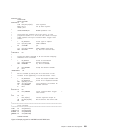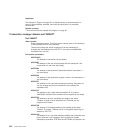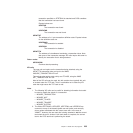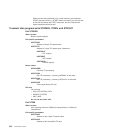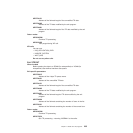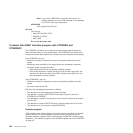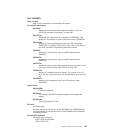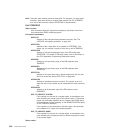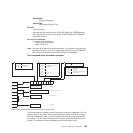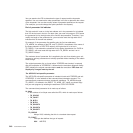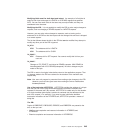Note: If you return UERCTDOK to suppress the first line of a
multiline message, the rest of the message is not presented
to XTDOUT, but is also suppressed.
UERCPURG
Task purged during XPI call.
XPI calls
You can use:
v INQ_APPLICATION_DATA
v INQUIRE_SYSTEM
v WAIT_MVS
Do not use any other calls.
Transient data EXEC interface program exits XTDEREQ and
XTDEREQC
The XTDEREQ exit allows you to intercept a transient data request before any
action has been taken on it by transient data. The XTDEREQC exit allows you to
intercept a transient data request after transient data has completed its processing.
Using XTDEREQ, you can:
v Analyze the request to determine its type, the keywords specified, and their
values.
v Modify any value specified by the request before the command is executed.
v Set return codes to specify that either:
– CICS should continue with the (possibly modified) request.
– CICS should bypass the request. (Note that if you set this return code, you
must also set up return codes for the EXEC interface block (EIB), as if you
had processed the request yourself.)
Using XTDEREQC, you can:
v Analyze the request, to determine its type, the keywords specified, and their
values.
v Set return codes for the EIB.
Both exits are passed eight parameters as follows:
v The address of the command-level parameter structure
v The address of a token (UEPTDTOK) used to pass 4 bytes of data from
XTDEREQ to XTDEREQC
v The addresses of copies of four pieces of return code and resource information
from the EIB
v The address of a token (UEPTSTOK) that is valid throughout the life of a task
v The address of an exit recursion count (UEPRECUR).
Example program
CICS supplies—as a softcopy listing only (not as a source code file)—an example
program, DFH$XTSE, that shows how to modify fields in the command-level
parameter structure passed to EXEC interface exits. DFH$XTSE is listed on page
Appendix F, “The example program for the XTSEREQ global user exit, DFH$XTSE,”
on page 877.
236 Customization Guide



